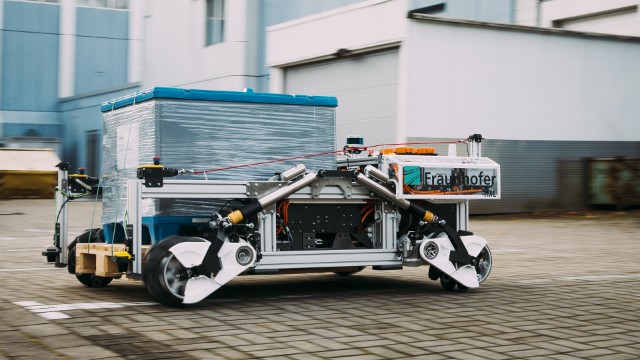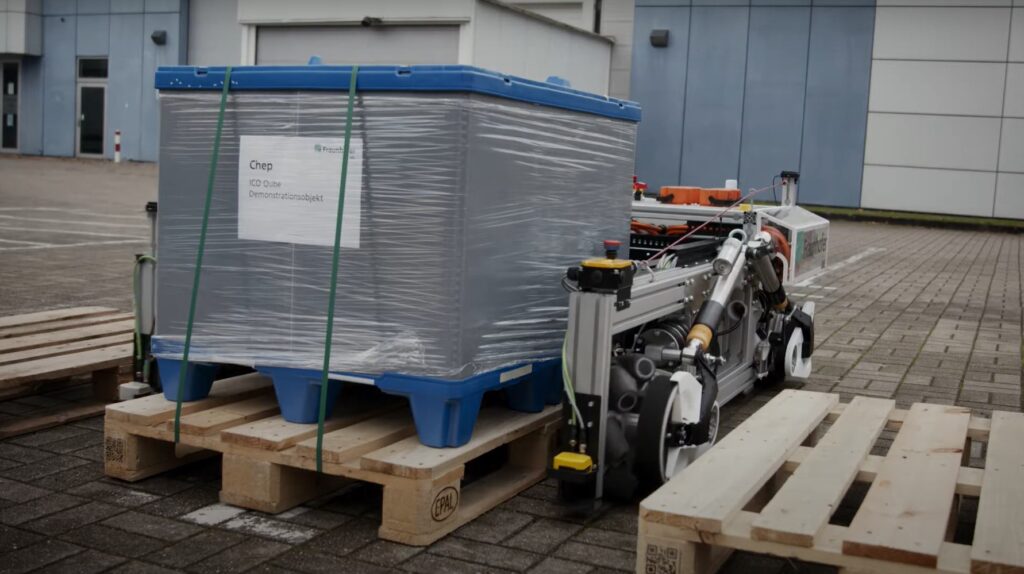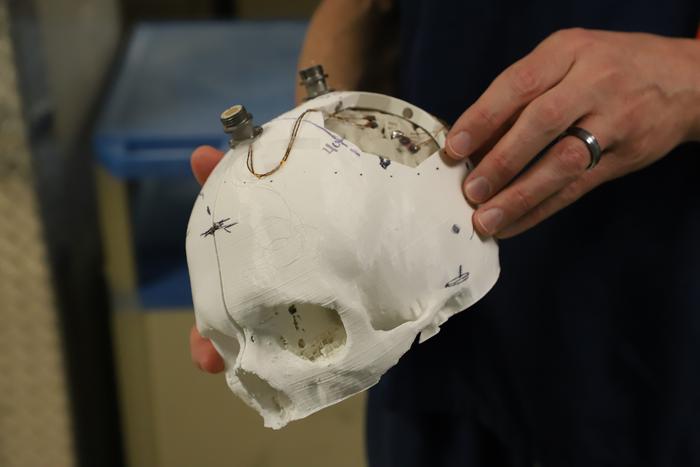From Fraunhofer IML 31/05/22 (published on Superinnovators 21/08/23)
In contrast to most driverless transport systems, which either have high performance, dynamics or flexibility and are designed either for indoor or outdoor use, O3dyn can combine all three properties.
O3dyn is not only highly dynamic and autonomous, but also designed for hybrid operation.
It can omnidirectionally transport large loads in the format of a pallet at a travel speed of up to 36 km/h.
In doing so, he leaves the protected and defined environment of warehouses in order to act dynamically on the respective company premises.
Hence the name O3dyn (pronounced Odyn), which stands for omnidirectional, outdoor and open source.
Odyn is not just the first of a new breed of mobile robots from the ‘continuum’.
Its development marks the entry into an open form of international research and development in the field of autonomous vehicles and robots.
With Odyn, we have come a little closer to the goal of lifting the much-cited data gold and launching the right algorithms,” explains Prof. Michael ten Hompel, Executive Director of the Fraunhofer IML.

Digitization creates progress
With Odyn, the Silicon Economy project we support shows very specifically how automation, artificial intelligence and digitisation with open source developments are further advancing logistics in Germany,” says Dr. Volker Wissing, Federal Minister for Digital Affairs and Transport.
In order for Odyn to be able to drive both indoors and outdoors without any problems, the researchers have combined the omnidirectional chassis with Mecanum wheels and air suspension.
This not only allows driving in the tightest of spaces and precise positioning of the load.
Thanks to the special choice of wheels and the air suspension, safe, load-independent running on uneven ground is also guaranteed.
The chassis can adapt to possible uneven ground outdoors.
At the same time, the load is protected with the help of the suspension and damping function.
The load is also picked up with the help of the air suspension.
Odyn lowers to pick up pallets.
The load is secured by latches that slide in between the pallet blocks from the outside and then hold them in place.
This prevents the pallet from slipping out during transport.
The braking system of the nimble transport robot consists of the electric service brake and an emergency brake that works with wearing brake plates under the frame.
In the event of emergency braking, the suspension air valves are opened.

The vehicle lowers itself onto the braking plates very quickly and thus comes to a safe standstill in an emergency.
Another challenge that the researchers had to master was seamless navigation between indoor and outdoor areas.
They solved this with environment and radio-based localisation algorithms.
Localisation uses lidar scanners, 3D camera systems and differential GPS/GNSS.
The greatest difficulty that the researchers are currently facing is safety in autonomous operation.
“Like the automotive industry, we too must find solutions to ensure safe autonomous driving in public spaces with all the unforeseeable events such as obstacles that suddenly appear on the road,” explains Guido Follert, Head of the Machines and Systems department at Fraunhofer IML.
“There’s still a bit of work ahead of us.”
Another novelty is the development process: simulation-based artificial intelligence.
Thanks to modern graphics cards, highly complex processes can be simulated in real time.
Using motion capturing, the scientists compare the behaviour in the simulation with that of the real vehicles and thus optimise the simulation model.
The more the difference between model and reality decreases, the more the robot becomes the cyber-physical twin of the simulation.
This approach can massively reduce development times: Prototypes can be tested in digital reality before they are built.
In addition, the developments of hardware and software can be decoupled in this way.
A digital continuum of development emerges (“robotic continuum”).
Odyn was developed as part of the large-scale research project Silicon Economy.
The concept and the construction are made available open source (as open source) at the Open Logistics Foundation (see www.OpenLogisticsFoundation.org ).
With the large-scale research project Silicon Economy, the Fraunhofer IML wants to help a decentralised, federal and open platform economy to achieve a breakthrough in Germany and Europe.
The Fraunhofer IML is looking for further partners for the further development of the exciting vehicle concept.
The institute will present Odyn from May 31 – June 2, 2022 at the LogiMAT in Stuttgart in Hall 1, Stand K61.
The technical details at a glance:
Drive: 4 electric motors
Suspension: omnidirectional
Vehicle weight: 450 kg
Top speed: 36 km/h
Payload: 350 kg
Positioning system: 3D camera system, lidar scanner and differential GPS.
More info
https://git.openlogisticsfoundation.org/silicon-economy/simulation-model/o3dynsimmodel



